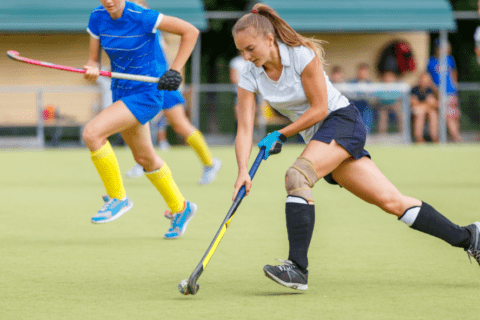
Sport Concussion…Return to Learn!
Published on: octubre 17, 2018
In our last case, we presented Janice Williams, an 18-year-old high school senior field hockey player who was accidentally hit in the head with an opposing player’s elbow. We reviewed the assessment process and findings, developed a problem list, identified treatment goals and objectives, and a plan of care with specific rehabilitation considerations.
The Berlin Guidelines published 2017 that we discussed also recommends a graduated return to school guide for those individuals who have sustained a sport-concussion and are students. The 4-stage process is as follows:
Stage 1 – Daily activities at home that do not give symptoms
Stage 2 – School activities
Stage 3 – Return to school part-time
Stage 4 – Return to school full-time
Depending upon the sport (i.e. non-contact), the steps may be modified to accommodate the individual who has been concussed.
For Janice, stage 1 would be to attempt to perform cognitive activities at home that do not exacerbate symptoms. In most cases it is not realistic to suggest that Janice shut down all functions, such as texting, watching tv, etc. So instead, limiting these activities is a more realistic approach.
There is no specific timeline for progression through each stage, though it is a good idea to plan for 1-2 days minimum. Stage 2 for Janice would include returning to reading and writing activities, oftentimes associated with typical homework assignments, as tolerated that again do not increase symptoms. It is not possible to predict how much or for how long to read or write. However, it is safe to plan for a time that is less than what is normally required for homework completion. Keep in mind that sensitivity to light, and increased focus may facilitate Janice’s headache.
Though some suggest that a return to play should coincide with a return to school, it is not always possible to parallel these two approaches. Nonetheless, it is fairly safe to assume is one is not ready to return back to a classroom successfully then a return to the playing field should not be considered.
For stage 3, Janice will be ready to return to school – on a part-time basis. “Part-time” return to school has not been specifically defined. Some report that one would start by going to school for 1-2 hours, then increase each day by 1-2 hours. Others might suggest that you can return to school for the full day, but in actuality take frequent breaks from class so that you are not overly stressing the cognitive functions, hence you could be in school for 5 hours but only in class activity for 2 ½ hours. There may not be a right or wrong approach, as the goal is to perform the return to school symptom free.
The 4th and final stage is a full return to school. At this time, not only would Janice be able to attend a full day of school, she would be expected to do some symptom-free that evening and the next day. One of the difficulties in this phase is that she would now be expected to begin to complete any missed work. In essence, an informal “stage 5” is a time when one is fully integrated back to school and doing additional work to catch up!
Throughout the return to school process, it is essential for communication to occur between Janice’s physician and therapists to her school teachers and counselors that convey helpful and required accommodations. For example, being allowed to wear sunglasses and/or a baseball cap in class can minimize the amount of bright lights. While in most cases not allowed, being able to accommodate in this manner will improve Janice’ tolerance to focus in class without increasing symptoms. If intermittent class breaks, or limited class minutes is recommended, this should be clearly conveyed in writing for all parties to assist with the accommodations.